Texas Clean Energy Debate Enters a Polar Vortex
Two weeks ago, San Antonio’s city-owned utility, CPS Energy, published the Flexible Path Resource Plan (PDF), a report purporting to forecast the cost of moving off coal power by 2030. Among the three models used, the one deemed the best choice for local pocketbooks continues coal burning until at least 2045. The scenario reflecting a complete swap of renewable energy sources for coal-burning JK Spruce’s 1,300 megawatts came with the greatest cost increase: a 15-year average of $11.53 per month per residential bill.
Taken on its own, it’s something of a garbage study. The assumptions used for the three cases appear designed to flunk renewables.
It’s not just that external costs of coal pollution are ignored, meaning the coal “tax,” paid for in increased rates of childhood asthma, heart attacks, and premature death. It’s not only flawed because it fails to factor into its analysis the so-called social costs of carbon, ie. the cost of the plant’s contribution to climate disruption. It’s a failure by design, in that the purported cost of the cleanest option is premised upon full plant retirement in 2023.
By comparison, the coal-friendly option takes until 2029 to close just the first unit. Collecting my own thoughts on the study, this was the headline I was working with: “CPS Energy’s Coal Retirement Study Designed to Flunk Renewables.” And it’s still true.
Blistering Arctic weather poured into Texas this week, freezing wind farms and complicating debate over a needed transition to renewable energy.
But the energy conversation got complicated for many this week after the jet stream normally encircling the Arctic winds loosened, sending a great sea of freezing air spilling over the Great Plains and across Texas.
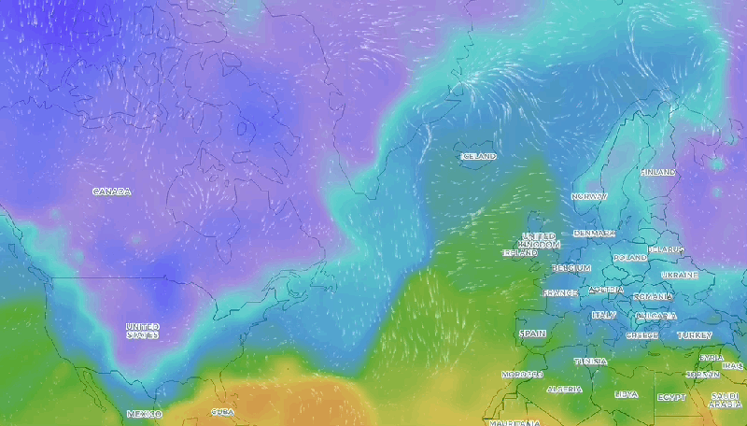
Frozen West Texas wind farms and compromised solar farms offer a narrative shift about the value—and availability—of energy. To wind’s defense, the state’s coastal turbines are spinning so hard that they are offsetting some of the power loss at the West Texas farms, according to the Austin American-Statesmen. But there is no way around it: the dim skies and freezing rain mean clean energy is in an depression-shaped slump this week. (And it’s not good formula for Texas drivers, whether gas- or battery-powered, as we saw in the tragic 100-plus vehicle pileup that killed six late last week and hospitalized dozens.)
“We are experiencing record-breaking electric demand due to the extreme cold temperatures … [and] higher-than-normal generation outages due to frozen wind turbines and limited natural gas supplies available to generating units.”
— Bill Magness, CEO - Electric Reliability Council of Texas
As I write from our 80-year-old home on the near West Side, there are icicles running along the eaves. Our heat-loving papaya tree’s leaves are caught in freeze frame, splayed green fingers frosted stiff but already dead. Inside, we’ve sealed off most of the rooms in the house, holding greedily what heat we can derive from a trio of space heaters in the front room.
CPS Energy’s free weatherization program blew a generous snowdrift of insulation into the attic years ago, but the warped rubber stripping across the gaps in the peeling windows and across the threshold of the front door do little to keep us secure from the wind.
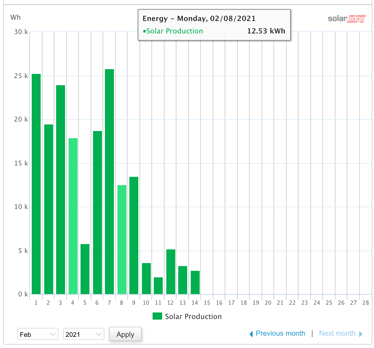
It’s an old house, like so many thousands of San Antonio homes. The streets are marked by plastic tarps over incomplete renovation jobs, missing windows, slowly collapsing foundations. Across our roof, the solar panels are an ice-darkened slate. And our production is suffering, meaning we’re equally subject to the spiking cost of energy. If we could afford one, a wall battery would secure us for a day or two, but not for a week of bleakness.
Alerts on Sunday from the Electric Reliability Council of Texas (ERCOT) and our local utility, CPS Energy, warned of a straining electric grid. Scattered outages turned into rolling blackouts across our city and state.
Listen to the CPS Energy robocall from Sunday:
People are being urged to dial back their thermostats and bundle up as likely millions prepare to face their first taste of 10-degree weather—for the next several days in a row. And while working families across the city are doing what they can to help, we’re still waiting for news from the region’s largest companies and military installations about their energy-reduction strategies.
It’s only a matter of hours before the scurrilous distortions of grandstanding politicians or groups like the Texas Public Policy Foundation roll into the comment sections of local media sites. Those who have vigorously defended the fossil fuels that are killing us will level inverse accusations against “the environmentalists”: that efforts to bring about a clean-energy transition are actually what are putting lives at risk.
{UPDATE: In spite of the spin on wind, it’s gas, coal, and nuclear (and really bad planning) that are chiefly responsible for plunging millions into blackouts this week in Texas.}
Besides the issue of actual fault in this current crisis, what this accusation misses is the core demand that animates most of today’s environmental movement, that the transition we are fighting for must be a just transition. And in that way, we commit to recognizing complications. We know the language of opportunism can appear on all sides of the debate, while the actual needs of people and the land are ignored.
Editor's note: read the rest of this article at Deceleration News
by Greg Harman, San Antonio Clean Energy Organizer for Lone Star ChapterStill Time to Apply for CPS Advisory Committee
CPS Energy has extended the deadline to apply for a spot on the Rate Advisory Committee until March 12th. So far, over 100 folks have applied. We want to do our best to advocate for our members and partners, so let me know if you have applied or intend to apply.
As a reminder, this committee is forming out of CASA and Sierra Club advocacy and intended to guide the utility into deeper levels of renewable energy integration in keeping with our obligations under the CAAP. Equity in rate setting is one of many values and reforms we can work to centralize in the process.
by Greg Harman, San Antonio Clean Energy Organizer for Lone Star ChapterGreen Infrastructure and Low Impact Development: Recasting for Multiple Roles
At our March General Meeting, San Antonio River Authority (SARA) staff will discuss green stormwater infrastructure’s broad appeal for our community’s (competitive) sustainability and resiliency needs, and describe some ongoing projects.
Editor's note: This Zoom meeting is identical to our February meeting, which was re-scheduled because of the winter storm we just experienced.
Tuesday, March 16th
6:00 p.m.
Online via Zoom
Zoom Meeting Details
| Informal get-to-know-you Announcements Featured Program |
6:00 pm to 6:15 pm 6:15 pm to 6:30 pm 6:30 pm to 8:00 pm |
- Link to meeting page at Zoom,
- Meeting ID: 933 0035 1100
- Passcode: 875772
Please RSVP on our club's event page.
About our Speakers
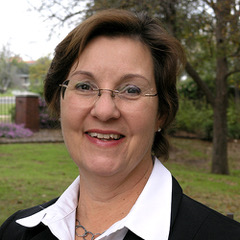
At SARA for 19 years, Karen Bishop is dedicated to increased storm- and surface water quality. Managing projects adopting the City’s first Low Impact Development (LID) code, she has held supervisory positions in SARA’s Intergovernmental & Community Relations Department and Executive Offices, and now serves as Senior Supervisor of the Sustainable Infrastructure Unit.
She is the contracted project manager of the COSA Edwards Aquifer Protection Program’s $10M water quality projects program, co-chair of the Environmental & Water Resources Institute San Antonio Chapter, and co-vice-chair of US Green Building Council South Texas Region. She has also overseen LID training, incentive, maintenance, and design assistance services offered by the River Authority.
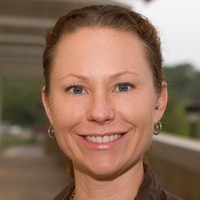
Michelle Garza is a Stormwater Analyst in SARA’s Sustainable Infrastructure Unit. Her diverse background melds geology, environmental science, urban and regional planning, sustainable energy, and business management. At SARA for more than five years, she works to educate the community on sustainable stormwater solutions to improve water quality.
She is currently SARA’s project manager working with the Texas Commission on Environmental Quality (TCEQ) on the Upper San Antonio River Watershed Protection Plan Green Stormwater Infrastructure Master Plan 319 Grant. She is also working toward her M.S. in Urban and Regional Planning at the UTSA, where she hopes to learn strategies for implementing low impact development and green stormwater infrastructure into planning for SARA’s four county jurisdiction.
Our General Meetings are held on the third Tuesday of each month, and are free and open to the public.
A Couple of Lovely, Moderate Peak Climbs in New Mexico
Gold Hill is a 10.4 mi loop trail from Twining campground in Taos Ski Area with a 3400' elevation gain. This route goes up to Bull-O-the-Woods pasture and down Long Canyon trail to the west.
Hiking Wheeler Peak is an 8.8 mile out-and-back, gaining 3000'. Starting from the trailhead on the south side of Taos Ski Area, you climb to Williams Lake and then up from there. Both hikes are in Carson National Forest. The pictures below are from July, 2020.
Wheeler is the highest peak in the state, here's a list of the others. Walter is not mentioned, presumably due to being considered a lesser summit of Wheeler.
The hiker in the first picture said this was his dog's first summit (still in training). His previous dog had been all over the southwest with him. He was moving much faster than I.
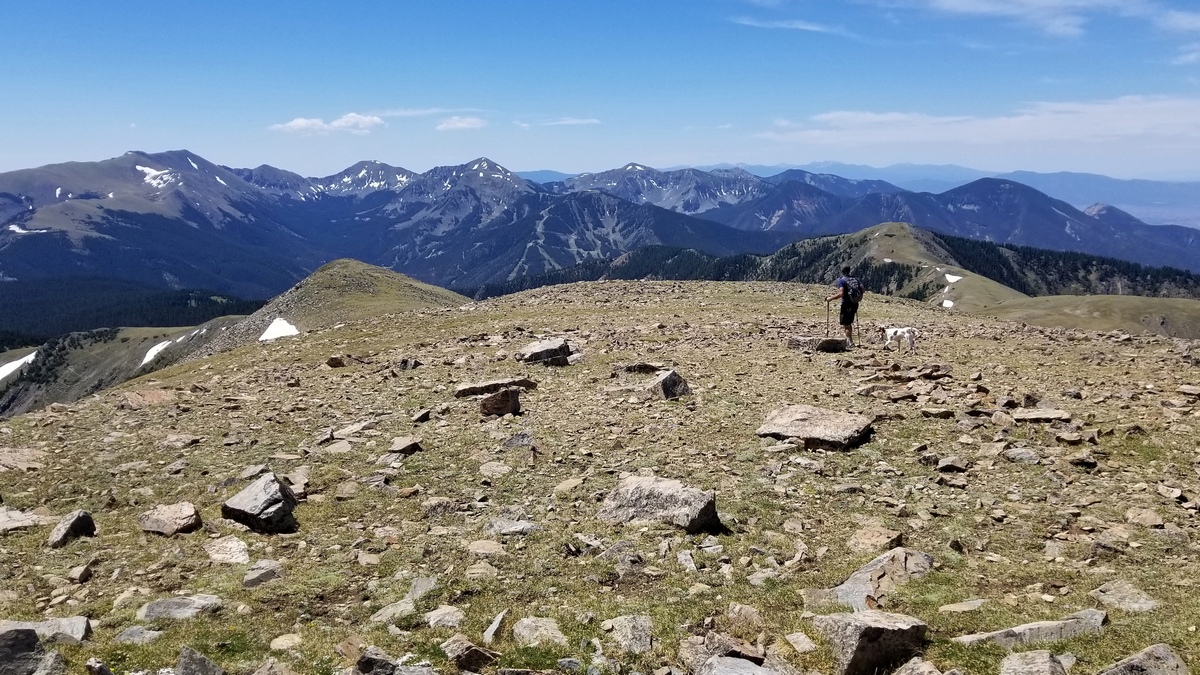

What Might Aldo Leopold Have Thought Of Wheeler Peak Wilderness?
Leopold, 1887-1945 (Wikipedia page), was responsible for establishing America's first wilderness area, the Gila Wilderness in western New Mexico. He wrote: “Wilderness is the one kind of playground which mankind cannot build to order... I contrived to get the Gila headwaters withdrawn as a wilderness area, to be kept as pack country, free from additional roads, ‘forever.'” Leopold was a creature of the early years of the US Forest Service, being assigned to hunt predators in New Mexico. But he later came down firmly on the side of wilderness as a healthy biotic community, and helped found the Wilderness Society.
Most of the trails mileage to Wheeler Peak is in the Wheeler Peak Wilderness. Surely Leopold would be quite amazed, even alarmed, at the enormous hordes of hikers doing the peak. In our defense I must say everyone I saw was respectful of the land. I did not see any litter whatsoever, even micro-litter, except a couple pieces near Williams Lake, which I believe I picked up. And spending time in nature is important for humans, even as numerous as we often are in these areas (further, Richard Louv's books Last Child in the Woods, Our Wild Calling, and Nature Deficit Disorder). Time in protected lands results in many of us working to protect and expand those into the future.
A few more Leopold quotes on the Aldo Leopold Foundation website, from his book, A Sand County Almanac:
“All ethics so far evolved rest upon a single premise: that the individual is a member of a community of interdependent parts.The land ethic simply enlarges the boundaries of the community to include soils, waters, plants and animals, or collectively the land." From the Land Ethic chapter.
“We abuse land because we regard it as a commodity belonging to us. When we see land as a community to which we belong, we may begin to use it with love and respect.” From the foreword.
“When we hear his call we hear no mere bird. We hear the trumpet in the orchestra of evolution. He is the symbol of our untamable past, of that incredible sweep of millennia which underlies and conditions the daily affairs of birds and men.” Regarding sandhill cranes, from the Marshland Elegy chapter.
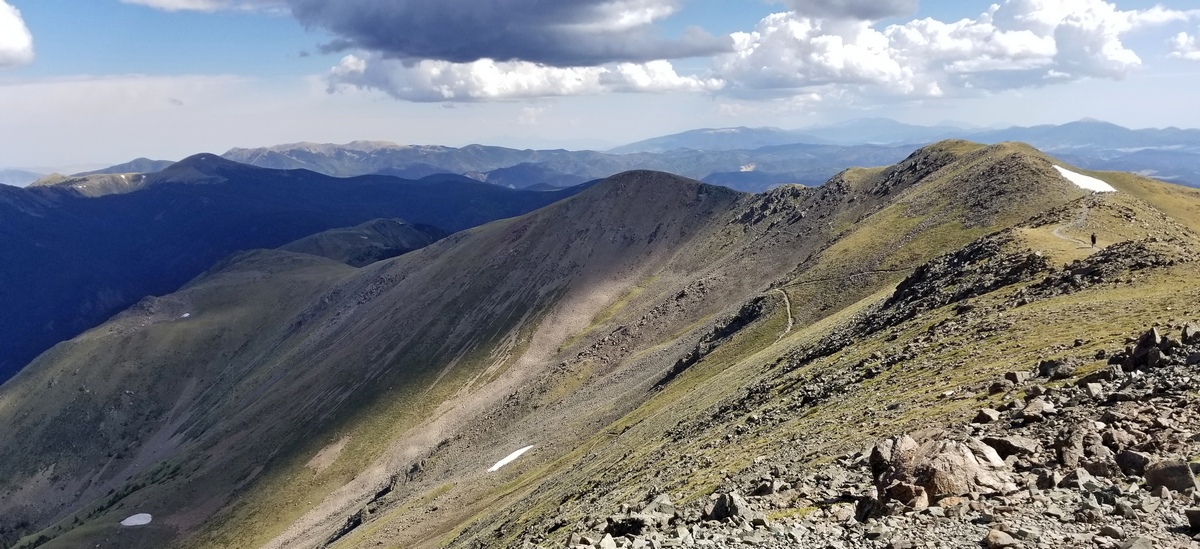
Here are the Gold Hill page at SummitPost.org and the Wheeler page, with good photos. Here is the page at HikingProject.com with a map. There is a great shaded camping area at Bull-O-the-Woods pasture with a pond, between the two. Would be nice to backpack up there from Taos Ski Area and do the day hikes north to Gold Hill and south to Wheeler. Best to get started early morning if in July, that is the monsoon season.
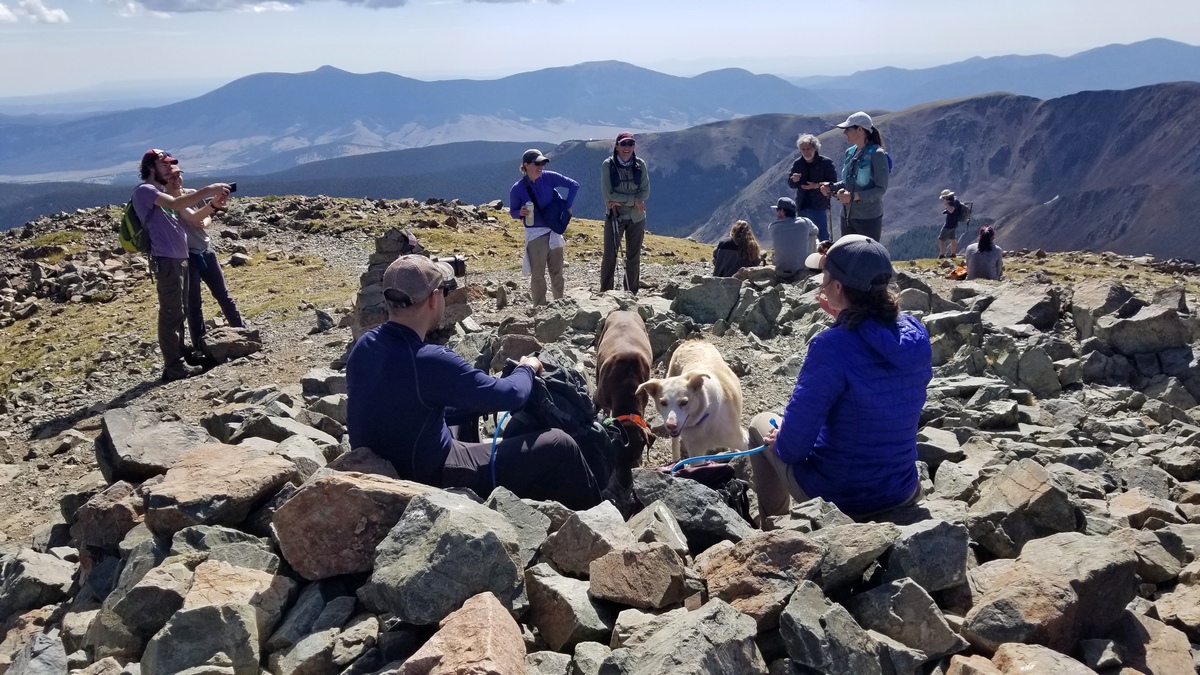
Reinventing the Human
I have recently rediscovered Thomas Berry (1914-2009), the prophetic eco-philosopher and writer. The beautiful prose of his The Dream of the Earth (Sierra Club Books, 1988) changed my understanding of reality.
Berry, a cultural historian, set the stage for his revolutionary ideas by focusing on our new scientific understanding of the universe. Every particle, every being, in the universe is unique, never to be duplicated. Each being expresses itself in its own way. And all are part of a vast unity, “poised so precisely in holding all things together in the one embrace and yet so lightly that the creative expansion of the universe might continue on into the future.”
The other backdrop for Berry’s ideas is the most important fact of the last two centuries: the human destruction of the earth and its species. “Not only are we bringing about the extinction of life on a vast scale, we are also making the land and the air and the sea so toxic that the very conditions of life are being destroyed.”
Berry’s compelling solution is no less a project than to reinvent the human. This begins with rediscovering “a truly human intimacy with the earth and with the entire natural world” within the context of our scientific tradition. For our species to revive this sense of intimacy requires that we overcome the “mechanistic fixations … in our emotions and sensitivities as well as our minds.”
Our modern cultures are “autistic,” Berry says, with “our mechanism, our political nationalism, and our economic industrialism.” We have begun to overcome this confinement by recognizing that, as the physicist Brian Swimme says, “The Universe shivers with wonder in the depths of the human.” The human is the universe reflecting on itself. And we know that our garden planet is special, magical, enchanting, unlike anything else we see in the universe. The earth is a unique, self-directed organism, a “biospiritual planet.”
“The difficulty is in the order of magnitude of change that is required of us.” To achieve this change, we can find guidance from the earth itself, which is the first healer, the first lawgiver; from indigenous cultures; from the feminine side of our nature; from the mystics of the great spiritual traditions; from artists and ecologists.
To hear Thomas Berry speak on these issues is a profound experience. I recently saw a 1984 talk by him on the Twelve Principles of the Universe on YouTube. I watched it twice and took notes. Other major books by Berry are The Universe Story (with Brian Swimme, 1992); The Great Work: Our Way into the Future (1999); and Evening Thoughts: Reflections on the Earth as Sacred Community (2006).
by Darby Riley, Chair, Alamo Group Political CommitteeNew to the Bookshelf
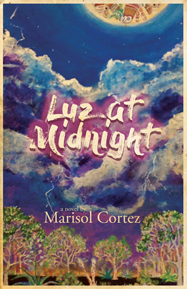
A new novel by local writer and environmental activist Marisol Cortez will launch online this Friday.
Friday, March 5th
6 to 7:30 p.m.
Link to Zoom meeting
Luz at Midnight contains a scene that is familiar to Texans after last month's cold weather blackouts.
When the power cut off for 22 hours at José Hernandez’s house this past February in the middle of a record freeze, he didn’t know why. “I thought we had gotten disconnected,” he says. … Regardless, he knew what to do. “With no power to run the space heaters, we had the kids sleep with all the dogs to keep warm,” he laughs, remembering. “Like they do in the Arctic.”
It’s an anecdote that feels less quaint now that the Arctic circle is melting during summer, then dipping down during winter to encircle South Texas, with flooding and hurricanes and drought in between – all of which portend further power outages.
Although the book went on sale last December, these words were penned seven years ago and are remarkable for seeming to predict our recent hardships. Read more about Ms. Cortez's debut novel in this story by Nicholas Frank in the San Antonio Report: ‘The shape of things to come’: San Antonio author Marisol Cortez foresaw the rolling blackouts now plaguing the city.

Outings: The Call of the Wild
Visit the Alamo Sierra Club Outings page on Meetup for detailed information about all of our upcoming Sierra Club Outings.
The Alamo Sierran Newsletter
Richard Alles, Editor
Published by The Alamo Group of the Sierra Club, P.O. Box 6443, San Antonio, TX 78209, AlamoSierraClub.org.
The Alamo Group is one of 13 regional groups within the Lone Star Chapter of the Sierra Club.
Changed your contact information?
If you're not sure whether the Sierra Club has your current email address, send an email to Member Services with your name and address and/or member ID (see Locating Your Member ID) so they can add your email address to your member record.
Have you moved? Let us know by sending your old address, your new address and your member ID to: address.changes@sierraclub.org.
Go online for the latest news and events
 |